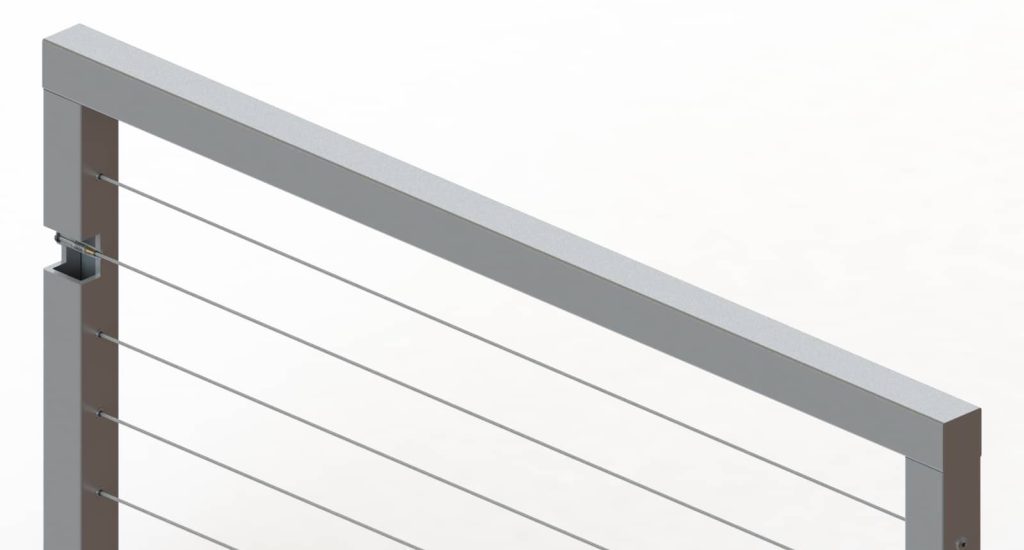Learn from the cable railing experts.
The preferred method of fitting combinations will always depend on your project and level of experience. We have outlined the most common cable railing fitting combinations and the benefits of each, to help you decide what is best for your project. Remember, it is best practice to include one tensioning fitting to each end of the cable run.
For installers that use cable railing infill regularly, in medium to large-sized projects, there are two common fitting combinations for installation:
Swaging is a term used to describe how a stud or a ferrule is attached to the cable. When the cable is swaged it cold forms the stainless-steel fittings, using 10,000 pounds of pressure to permanently attach the fitting to the cable.
Our swaged fitting line offers a variety of concealed and exposed options depending on the project design aesthetic. Swaged fitting options include our Invisiware® Receivers, Adjust-A-Body®, and Adjust-A-Jaw® lines of cable railing fittings. Whether swaged on-site with portable installation equipment, or pre-swaged by the manufacturer, Ultra-tec makes it easy to order or swage fittings onto stainless-steel cable.
Swageless fittings are assembled by hand in the Ultra-tec® facility, located in Carson City, NV, utilizing a locking wedge system within the body of the fitting. Using a swageless fitting with stainless-steel cable requires no special tools or equipment. Simply push and twist the cable into the fitting for the cable to lock in place.
Our swageless line of cable railing fittings provide an exposed look and utilize our proprietary Push-Lock® and Pull-Lock® technology. The fittings are designed to be installed to the inner face of the posts coupled with a spool of cable for easy on-site measurements. This flexible product line requires no special tools for installation.
We recommend working with an architect, designer, or fabricator in the design phase because there are several components to consider when installing cable railing infill. These considerations include the number and type of posts, fittings, hardware, and the infill diameter. The design phase works through various scenarios to help create a code compliant system, with a smooth installation, that achieves the requested aesthetic.
Depending on your business and the type of projects you design and build, there are a variety of common fitting combinations to consider before installing a cable railing infill project. Let’s look at the differences between using swaged versus swageless fittings, in combinations we commonly see our customers choosing for their projects.
Most Common Swaged and Swageless Combinations
The preferred method of fitting combinations will always depend on your project and level of experience. We have outlined the most common cable railing fitting combinations and the benefits of each, to help you decide what is best for your project. Remember, it is best practice to include one tensioning fitting to each end of the cable run.
For installers that use cable railing infill regularly, in medium to large-sized projects, there are two common fitting combinations for installation:
Swaged to Swaged Fittings:
- Once the cable is swaged, it renders a permanent solution. This allows the intermediate elements between terminating end posts to be drilled close to the diameter of the cable, because there are no fittings to pass through the holes in the posts.
- An installer can swage the cable on the job site using a swaging tool and equipment, requiring only a spool of stainless-steel cable and the cable fittings necessary for the project.
- Both ends of the cable can be swaged before arriving on the job site by the manufacturer, however, this requires exact measurements submitted through the take-off process.
This fitting combination works well with longer cable runs and works with any cable railing applications, commercial and residential.
At Ultra-tec, we offer rental swaging kits, an option to consider before investing in the purchase of the equipment.
“With the amount of cable we install, using swaged fittings reduces our material costs although can require more labor versus the ease and flexibility of the swageless,” said Hollis Uecker, owner of Texas Railing Systems, a cable railing expert. “We are able to cut our cable to custom lengths and use swaged fittings.”
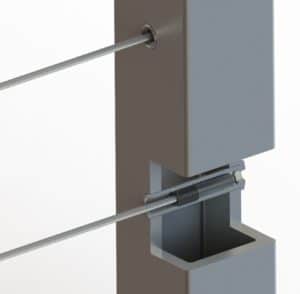
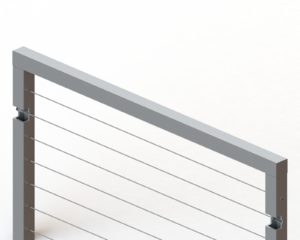
Pre-Swaged to Swageless Fittings:
The manufacturer or a network of manufacturer partners can pre-swage one end of the cable before delivery to the job site. The other end of the cable is left exposed — to pass through the intermediate post — to push into a swageless fitting.
- Ultra-tec offers two types of swageless fittings, a Push-Lock® and a Pull-Lock®, utilizing a locking wedge system inside the body of the fitting.
- Providing approximate field measurements for each cable run is required for an industry partner to factory swage one end of the cable. Each pre-swaged cable run will leave 3-inches of additional stainless-steel cable than needed so each run can be trimmed to exact length onsite.
Swaged to Swageless Fittings:
This is another popular combination. One end of the cable must be swaged while the fitting on the opposite end of the cable run will use a one-way locking mechanism inside the body of the fitting, essentially gripping the cable for a secure fit.
- An installer can swage the cable on the job site using swaging tools and equipment, a spool of stainless-steel cable, and the cable fittings necessary for the project.
- The installer will complete the cutting and swaging of one end of the cables on the job.
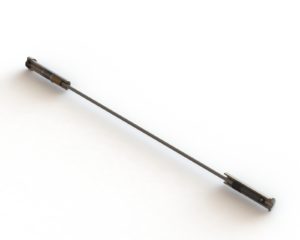
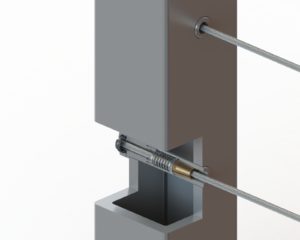
Swageless to Swageless Fittings:
Using swageless fittings on both ends of the cable run is another option for installers performing small to medium-sized projects. While there is no need for exact measurements for this option, cable is available in 100- or 500-feet spools to ensure adequate cable for the project.
- This option offers speed of installation with no need for special tools and is great for wood, sleeved, and metal posts. There can be less labor time spent on the job site using this cable fitting combination; swaging the cable on-site takes more time.
- Utilizing spooled bulk cable, the installer will assemble each run without special tools.
- After the cable is cut, attach the swageless fitting by pushing the cable into the fittings.
So… To Swage or not to Swage? That is the question.
The industry has advanced significantly as the demand for cable railing infill continues to grow. At Ultra-tec, your cable railing experts, we understand the need for various options to get the job done. Our customer support team is available to answer any questions regarding our products (including to swage or not to swage) and the best fitting options to help with a smooth installation. Contact us and we’ll be sure to help you determine the correct fitting combination for your project.

